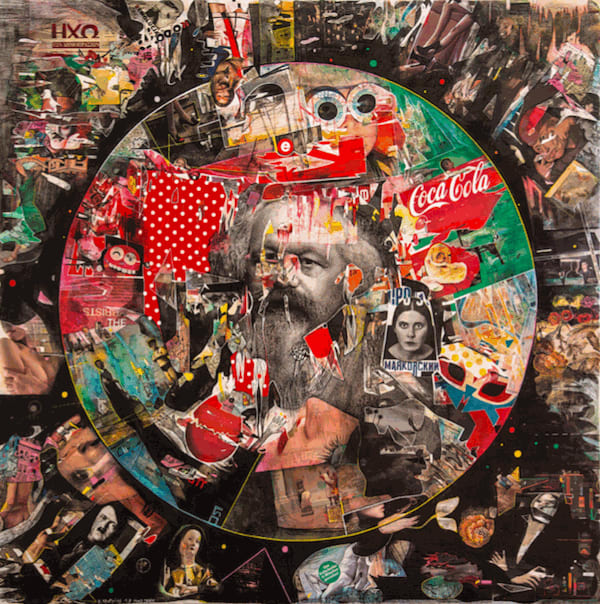Deep in the forest we meet | Konstantinos Patsios: Varvara Roza Galleries & The Blender Gallery
The oeuvre of Patsios is a synthesis of several painting metaphors, from conceptual art and expressionism to Pop Art, all delivered with a playful mockery and irony and an invitation to critical discourse. 'Deep in the forest we meet' will feature paintings and collages as well as NFTs of the original artworks.
Through a selection of collaged artworks and paintings on canvas, Konstantinos Patsios proves that he constantly evolves his expressive dexterity using a multitude of visual styles and references drawn from the history of art, comics, and the contemporary consumerist universe. With sharp narrative compositions that suggest modern palimpsests, he vigorously renders the contemporary deluge of the information of image.
His works come from three different periods: experimentation in black, where harsh contrasts are softened by the familiarity of his narrative compositions, often accompanied by political allusions; the shift towards colour and vivid contrasts where colour and collage balance, highlighting their multiple protagonists; and finally, the most deliberately talkative period of comics exploring their relationship - or rivalry - with painting.
Konstantinos Patsios says: "My work is a synthesis of several painting metaphors, from conceptual art and expressionism to pop art, all delivered with a sense of mockery and irony, and an invitation to critical discourse. Although they may seem naïve at first sight, I think there is a strong underlying political dimension in my pictures. I use a variety of expressive media, from painting, sculpture and photography to large-scale installations. Art and especially image have their own rules: they go beyond paint, brushes and paper, to constitute a narrative. Psychoanalysis is not sufficient by itself to interpret an image. A piece of art provokes aphorisms and coincidences. It may not be in itself a cause for war, but it will always be a mirror. One of the principles in my work is the synthesis of non-matching materials, data and the completion of an unequivocal picture. Another personal obsession has to do with confusion: sometimes when the narrative is tiring to my viewer, I juxtapose a tangled mess in order to stop thinking and start seeing! I would like my work to form a new field of thinking where all contradictions are resolved and a new type of harmony governs both the visual and the logic!"
The final composition is a long and pre-planned process in Patsios's work - despite the fact that the element of surprise is always present. Having initially selected and used materials (postcards, posters) that he himself has collected from his personal quests, experiences, and voyages, he then over-paints them, transmutes them and reconstructs them on canvas, thus transforming the painting into a practised organism. In this way, memory functions both individually and collectively, since by reconstructing his own experiences, the artist creates a new narrative that from now on concerns the collective memory. In a manner similar to the mechanism of memory that - at times confused, and at others with clarity that almost reaches obsession - dredges up impressed images into the present. One discovers in Patsios's images, fragments, impressions, colours and messages that are seemingly disparate, yet essentially perfectly homogeneous.





